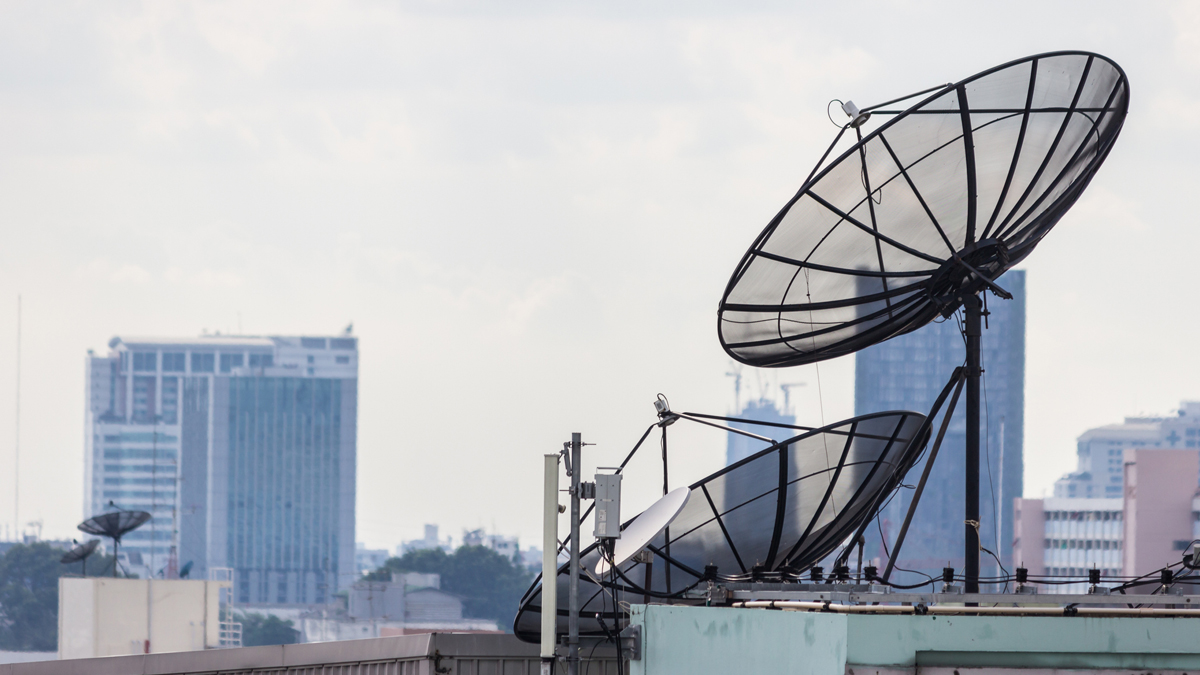
In the telecom industry, network infrastructure investment specialists – or “infracos” – are companies that own and manage physical, ground infrastructure assets. According to Jake Saunders, Vice President at ABI Research, infracos tend not to be one of the main telco service providers, but they may still have a broadband internet license or have secured property rights and rights of way from local or national governments.
Although infracos have been a pillar of the telecom industry for quite some time, they are just now beginning to emerge in the space and satellite industries, as satcom providers are starting to consider turning to infracos to own and manage their Ground-as-a-Service (GaaS) offerings.
Last year, Eutelsat announced that the Swedish investment firm EQT would acquire its GaaS operations. In an EQT news release, Carl Sjölund, Partner within the EQT Value-Add Infrastructure advisory team, explained why GaaS is a highly desired investment point. “At EQT, we identified satellite ground stations as an attractive digital infrastructure vertical several years ago,” he explained. “They play an important role in ensuring global connectivity, especially for those not covered by fixed and mobile connectivity solutions, and require deep global expertise in developing and operating telecommunications infrastructure businesses.”
The recent move from Eutelsat to replicate the network infrastructure investment specialist model is the first to be seen in the satellite space. In a Eutelsat news release, CEO Eva Berneke said, “We are proud to become the first satellite operator to embark on this innovative transaction which would allow us to build on the model adopted in other industries, and to optimise the value of our extensive ground network.”
Why Now is the Time for Satellite Infracos
As to why satcom infracos haven’t been adopted in the past, Saunders explained that, while there were several global satellite operators like Inmarsat, Intelsat, Iridium, and Globalstar, many satellite operations were largely limited to national or regional domains. “Securing landing rights and gateways in strategic markets can take significant investment and often involves a protracted regulatory approval process,” Saunders said. But with the rise of Non-Terrestrial Networks (NTNs) and regional and global Earth Observation platforms, the need for gateways and landing rights has grown exponentially.
In an increasingly competitive and congested space and satellite industry, satellite companies that are focusing on diversifying their business models by building out their gateways on the ground will be better positioned for the 2030 6G goal of supporting fully integrated NTN and cellular networks – which could be desirable investments for future GaaS infracos. “Eutelsat’s acquisition of OneWeb, a LEO operator with 600 satellites in orbit, presents opportunities in NTN and the wider professional satcom sector,” said Saunders. “Eutelsat has been in the final stages of building out and operating 45 gateways spread across the world.”
According to ABI Research, as of the end of 2024, there were an estimated 10,100 satellites in orbit and that figure could potentially grow to 43,500 by 2032. “While end-users may be communicating directly with an overhead satellite, a significant amount of voice, messaging and data will need to be relayed to another country or the internet,” said Saunders. “Gateways serve that process. Only a handful of satellite service providers will have the funding to set up gateways at national or regional teleports.”
Will Satellite GaaS Infracos Continue to Expand?
As NTNs continue moving towards the goal of fully integrating with cellular networks – accompanied by the need for gateways to facilitate the process – does this move by Eutelsat signal a start of a new market of large GaaS infracos?
“Some of the larger satellite service providers may be sitting pretty with an effective spread of gateways across the world or their region,” said Saunders. “National satellite operators or governments may be reluctant to sell off their gateways to a major GaaS provider without strong assurances to access.”
Saunders explained that Eutelsat’s GaaS operation acquisition by EQT could secure multiple satellite networks, and therefore achieve its return on investment, but also through greater gateway utilization, may be able to drive down the cost of its GaaS operation. “Other satellite operators that maintain a large portfolio of gateways may come under competitive pressure,” said Saunders. “National regulators are likely to keep a beady eye on the gateway sector. They would not want their satellite operations, and indeed terrestrial enterprise customers that use gateways for inter-regional communications, to be controlled by a limited number of players.”
Explore More:
The Telecom Industry is Embracing Autonomous Networks, is Satellite Next?
Telco Exec: $100 Billion Investments in 5G and Satcom
Chipmakers Release NTN Products Putting Spotlight on Satellite 5G
